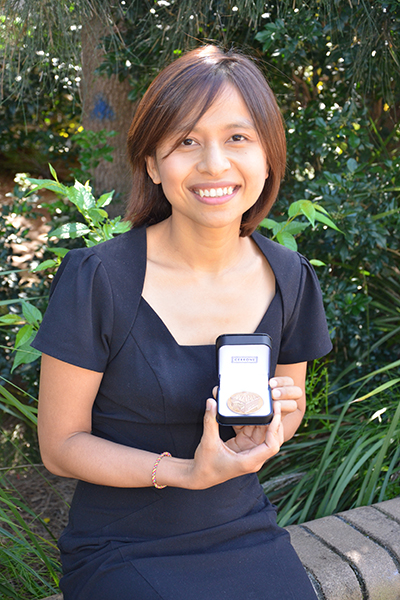February 27, 2014
Maths lecturer awarded prestigious JH Michelle Medal for Outstanding New Researcher
Motivation, endurance and persistence might be personal attributes more akin to athletic pursuits, yet those qualities along with high-level analytical and computational skills and a dash of creativity are essential for a successful career in mathematics, University of Wollongong (UOW) Senior Lecturer Dr Ngamta (Natalie ) Thamwattana said.
And she ought to know, having recently been awarded the prestigious John Henry Michell Medal for outstanding new researcher by a division of the Australian Mathematical Society, the Australian and New Zealand Industrial and Applied Mathematics (ANZIAM).
Dr Thamwattana, a senior lecturer in the School of Mathematics and Applied Statistics, has made pioneering contributions in the areas of granular materials and nanotechnology.
She was awarded a PhD in 2005 for her work on exact solutions and analysis of important industrial granular flows, such as discharge from hoppers.
Soon after, Dr Thamwattana was a co-founder of the Nanomechanics Group at UOW.
She said the JH Michell Award is one her proudest career achievements, along with the award of the ARC Australian Postdoctoral Fellowship in 2007-2010 to work on modelling applications of nanomaterials in biology and medicine.
“On a personal level, it is a recognition of my hard work,” Dr Thamwattana said.
“It is good to know that my contribution to the applied mathematics discipline is valued by my peers.”
Dr Thamwattana has published 60 refereed research articles in prestigious journals and has published 11 conference papers and a book chapter as well as being a co-author on a provisional patent.
So far, she has supervised five PhD students to completion of their post-graduate studies.
Her expertise is in using mathematics to solve problem such as measuring the flow of granular materials through an outlet that could help design better silos and other storage and transport infrastructure.
Other research involves developing mathematical models to try to understand the behaviour of materials at the nano scale.
“These nanomaterials have potential applications in many areas, such as energy, environment, health and medicine,” Dr Thamwattana said.
“In such complex areas, mathematical models can often reveal important insight and optimal parameters or situations that might be otherwise impossible to discern.
“Applications of nanomaterials in medicine, such as biosensors and carriers for targeted drug and gene delivery and in energy, such as hydrogen storage and high efficiency solar cells, are of my particular interest and there are numerous aspects that I look forward to tackling together with my research students and collaborators.”
